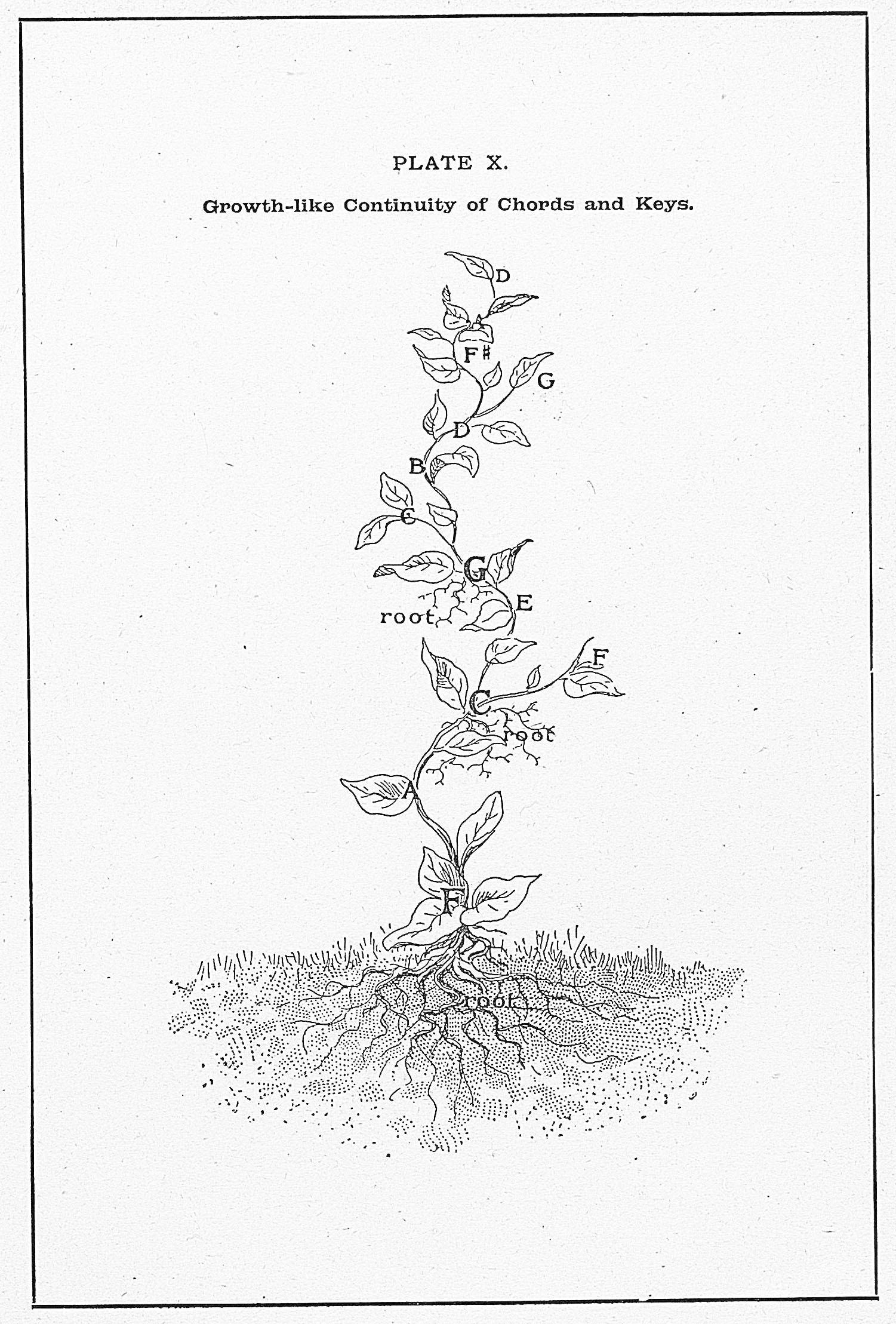
Under the symbol of a music plant this plate gives us to realize the growth-like continuity of chords and scales. The roots of the three chords of a key are represented in F, C, and G of the key of C. The plant might be represented as a creeping stem, like the creepers of the strawberry, with its progressive roots struck into the earth; but it is better to show an upward stem with aerial roots, for such are the roots of the musical plant. The main stem of the plant has the three chords, F a C e G b D; that is, F a c, C e g, G b d, the subdominant, tonic, and dominant. The terminal chord, D f# a, is to show that the keys as well as the chords GROW out of each other. Include the side branches which terminate with the octave notes of the chords, read thus - F a c f, G e g e, G b d g, because a chord is felt to be most complete in its unity when thus shut in by the octave note of its root. This is the reason why the great three-times-three chord does not stop at D, the top of the dominant chord, but goes on to the sixth octave of the fundamental root, shutting all in by the great peacemaker, F, in order to preserve the unity of the effect which this chord of chords produces. Before D. C. Ramsay showed that the scale of Harmonics extended to six octaves, it was by teachers of the science of music only extended to four. [Scientific Basis and Build of Music, page 110]
When Ramsay gave a course of lectures in Glasgow, setting forth "What constitutes the Science of Music," his lecture-room was hung round with great diagrams illustrating in various ways his findings; an ocular demonstration was also given of the system of musical vibrations by his favorite illustration, the oscillations of the Silent Harp of Pendulums. A celebrated teacher of music in the city came to Mr. Ramsay's opening lecture, and at the close remained to examine the diagrams, and question the lecturer, especially on his extension of the harmonics to six octaves. Having seen and heard, this teacher went and shortly after published it without any acknowledgment of the true authorship; and it was afterwards republished in some of the Sol-Fa publications, the true source unconfessed; but our plagarist stopped short at C, the top of the tonic, instead of going on to F, the sixth octave of the root of all; the effect of this was to destroy the unity of the great chord. The 22 notes instead of 25, at which this teacher stopped, allowed him, indeed, to show the natural birthplace of B, which Ramsay had pointed, but it beheaded the great complex chord and destroyed its unity. If C, the root of the tonic, be made the highest note, having quite a different character from F, it pronounces its character, and mars the unity of the great chord. Similar diversity of effect is produced by cutting off only two notes of the 25 and stopping short at D, the top of the dominant; and also, though in a weaker degree, by cutting off only one note of the 25 and stopping at E, the middle of the tonic; this, too, disturbs the unity of the fundamental sound. [Scientific Basis and Build of Music, page 111]
See Also
Ramsay - The Marshalling of the Host of the Lower Heavens20
Tree of Life
